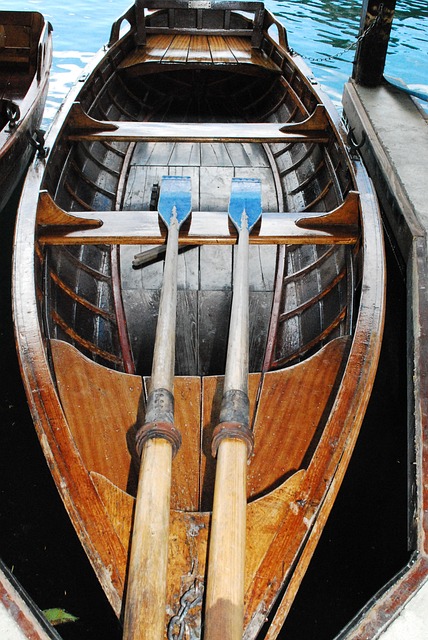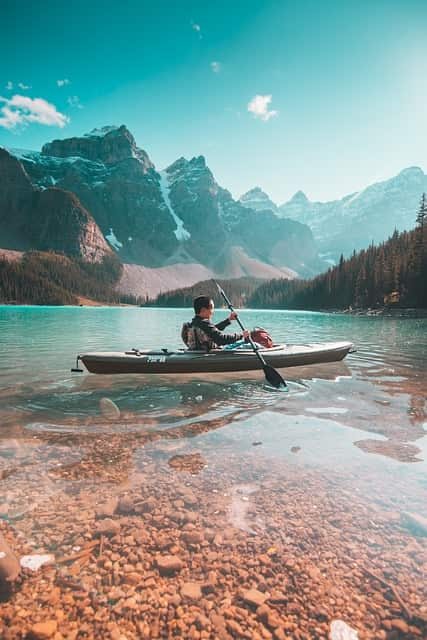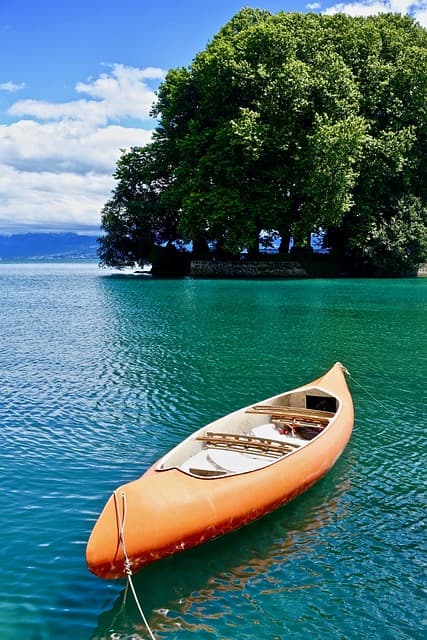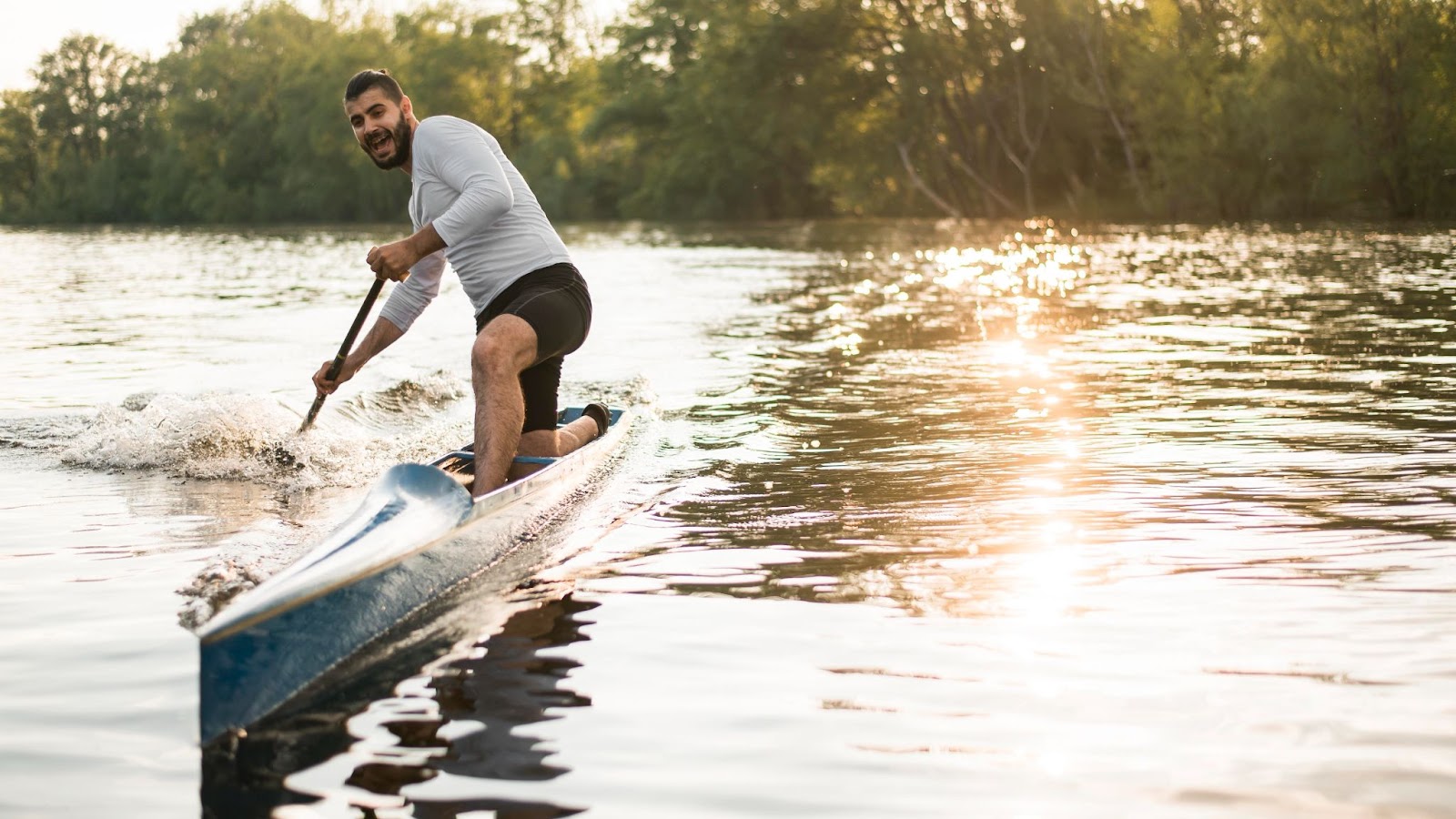Gratefully, the regulatory entities entrusted with the stewardship of North Carolina’s nautical statutes and ordinances demonstrate an appreciation for the elegance of simplicity. In the realm of North Carolina’s canoe and kayak regulations, a harmonious accord emerges, granting unpowered watercraft an exemption from the labyrinthine tendrils of registration requirements. Nevertheless, a compulsory mandate persists, dictating the presence of a life-preserving vest tailored for every individual traversing aqueous paths within canoes and kayaks. Additionally, a vociferous instrument, akin to the resonating trill of a whistle, is mandated, ensuring the capability to manifest audible signals when circumstance necessitates.
Navigating North Carolina’s Waterways: Canoeing and Kayaking Laws Deciphered
Exploring the pristine waters of North Carolina by canoe or kayak is a captivating endeavor that brings both tranquility and adventure. Amidst this aquatic wonderland, a set of regulations overseen by the North Carolina Wildlife Resources Commission ensures the safety and enjoyment of boaters across the state. Delve into this comprehensive overview to uncover the intricate tapestry of laws governing these human-powered vessels.
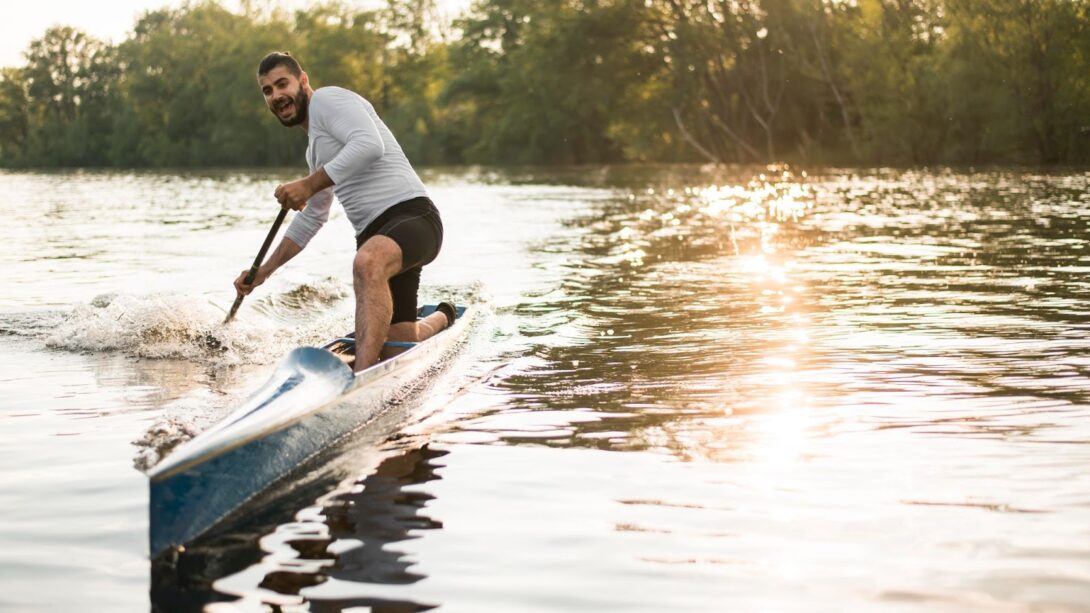
Authority and Oversight: Guardians of the Waters
The North Carolina Wildlife Resources Commission, entrusted with safeguarding the state’s natural resources, assumes the role of regulating boating activities within its jurisdiction. As you embark on your aquatic journey, it’s crucial to acquaint yourself with the laws and regulations that lay the foundation for responsible and enjoyable boating. To gain a deeper understanding of these regulations, you can explore a trove of information available through this link, a virtual compass guiding you through the intricate waters of North Carolina’s boating laws.
Setting Sail Without Bounds: Canoe and Kayak Registration
Venturing forth on the gentle currents of North Carolina’s waterways in your unpowered vessel, a realm of freedom awaits you. Unlike their motorized counterparts, human-powered canoes and kayaks do not require registration. This exemption serves as a testament to the state’s recognition of the serene harmony between man and nature as paddlers serenade the waters.
Unburdened by Title: The Art of Nomadic Paddling
As you glide upon the mirror-like surfaces of North Carolina’s lakes and rivers, the need for titling your canoe or kayak remains a distant notion. The freedom of your vessel’s unburdened identity, in line with the state’s regulations, allows you to focus on the art of exploration without bureaucratic entanglements.
The Paddler’s Liberation: Licensing and Operator Requirements
Harnessing the power of human determination, your paddles cut through the water’s embrace, propelling your vessel without the aid of motors. In this scenario, the North Carolina skies grant you exemption from licensing or registration requirements. The awe-inspiring spectacle of man and water harmonizing under the open heavens remains unencumbered by the trappings of regulatory oversight.
Guiding the Waves: Boating Education Certification
Akin to a maritime rite of passage, those born after January 1, 1988, are beckoned to pursue the North Carolina boating education certification, a testament to their commitment to safe and informed navigation. This course, meticulously approved by the National Association of Boating Law Administrators, elevates your understanding of watercraft operation. Crucially, this certification only beckons to those guiding vessels powered by 10 HP or greater motors, preserving the uncaged spirit of those navigating with lighter propulsion.
Beyond Sobriety: Navigating the Waters of Clarity
Amidst the undulating waterways, an unyielding proclamation resonates—a resolute prohibition against operating any vessel, be it a motorboat or the ethereal form of a canoe or kayak, under the intoxicating influence of alcohol or drugs. This foundational law stands as a testament to North Carolina’s dedication to preserving the pristine waters as a sanctuary of sobriety and clarity.
Safety Afloat: Equipping for Emergencies
Embarking on an aquatic odyssey unveils the necessity of equipping oneself for the unforeseen. The cherished waters of North Carolina demand vigilance, necessitating the presence of a wearable personal flotation device, an unobtrusive guardian always at the ready. Adhering to the state’s regulations, the minimum emergency equipment for your canoe or kayak includes:
- Life Jackets: Each soul on board adorned with U.S. Coast Guard-approved life jackets, tailored to their size and the water’s rhythm;
- Guiding Light: When the veil of visibility descends, a beacon emerges—a white navigation light, a sentinel warding off obscurity during the shrouded moments of nightfall, dawn, or dusk. Its radiant embrace must illuminate every angle, ensuring safe passage;
- Sonic Vigilance: Within the embrace of your vessel, an emergency whistle awaits, a sound-producing oracle of aid capable of echoing through the waters, summoning help when circumstances demand it.
Essential Boating Equipment in North Carolina
As you embark on your canoeing or kayaking adventure in the picturesque waterways of North Carolina, ensuring safety and compliance with the state’s regulations becomes paramount. Each state has its own nuances when it comes to life jacket requirements, but developing a steadfast habit of wearing a Personal Flotation Device (PFD) is a smart move, even if you consider yourself a proficient swimmer. While you might occasionally remove it for relief from scorching temperatures or in tranquil waters, a golden rule emerges: Keep that PFD on for utmost safety.
Let’s delve into the essential gear you need to legally and securely navigate North Carolina’s enchanting water bodies.
Life Jackets: Ensuring Buoyant Safety
Beyond personal preference, legal obligations dictate the presence of accessible and wearable PFDs for all occupants of your canoe or kayak. The choices extend to Type I, II, III, or a wearable V category, ensuring that you’re equipped with the appropriate level of buoyancy. Your safety and that of your fellow adventurers depend on the reliability of these life-saving devices.
Throwable Flotation Devices: An Option for Added Assurance
Unlike some jurisdictions, North Carolina doesn’t mandate throwable flotation devices in canoes or kayaks. While not obligatory, it’s a prudent consideration to include such devices as part of your safety arsenal. These items can serve as a valuable aid in emergency situations, providing additional support in case unforeseen circumstances arise.
Manual Bailing Device: A Wise Precautionary Measure
While not a compulsory inclusion, the wisdom of having a manual bailing device on board cannot be overstated. This mechanism facilitates the removal of water from your craft, enhancing stability and safety. It’s a small investment that holds the potential to make a significant difference, especially during unexpected encounters with rough waters.
Visual Distress Signals (VDS): Illuminating Your Presence
Foraying into federally-controlled waters alters the equipment landscape slightly. The requirement for Visual Distress Signals comes into play here. These signals, while not mandatory within the state’s inland waters, become essential when navigating federal domains. As the sun dips below the horizon, ensuring your vessel’s visibility becomes paramount. Equipping your canoe or kayak with a minimum of three night VDS’s or versatile day/night options like flares or red meteors ensures that your presence is unmistakably communicated.
Navigation Lights: Illuminating the Path
In the realm of unpowered vessels, the introduction of navigation lights is mandated during certain conditions. A luminous white lantern is the tool of choice, its brilliance acting as a safeguard against potential collisions. When the sun bids adieu and night descends, these lights take center stage, essential when your boat is in motion or anchored between sunset and sunrise.
Sound Devices: Sounding Safety Alarms
To enhance communication and alert others to your presence, a powerful sound-producing device becomes a necessity. North Carolina’s requirement for canoes and kayaks underscores the significance of this auditory safeguard. It’s a stark reminder that in the vast expanse of water, traditional human voices might not suffice. Equipping your craft with a device capable of emitting loud, far-reaching signals enhances your safety and those around you.
Fire Extinguishers and Emergency Locator Beacons: Optional Yet Prudent
In the case of fire extinguishers, the good news for canoe and kayak enthusiasts is their exemption from this requirement. These waterborne vessels are spared from this obligation due to their design and minimal risk of fire hazards. However, it’s crucial to note that safety should always come first, and carrying a small fire extinguisher could be an extra precaution.
While not a legal obligation, the inclusion of an Emergency Locator Beacon is championed as a universal safety measure. This device transcends geographic boundaries and becomes a crucial asset for any paddler. Whether you’re embarking on serene lakes or challenging rivers, having a means to summon assistance at the touch of a button underscores the importance of preparedness.
Is the Use of Life Jackets Mandatory for Adults on Canoes or Kayaks in North Carolina?
When embarking on canoes or kayaks, regardless of their dimensions, it is imperative that they are equipped with a personal flotation device (PFD) approved by the US Coast Guard. The PFDs accepted are of Type I, II, or III, and each individual present on the vessel must possess one.
For individuals below the age of 13, there is a specific requirement – they are obligated to don an approved PFD while within the vessel, particularly when it is in motion.
Certain exemptions are applicable to specific watercraft. This includes racing canoes and kayaks, along with rowing shells and other racing boats that rely on wind or paddle propulsion.
Vital to acknowledge is the condition of the PFD itself. It must be devoid of any substantial damage such as tears or ruptures and must not have any dysfunctional straps. Additionally, it must be effortlessly accessible and tailored to fit the intended wearer.
Emergency Sound Device (North Carolina Boating Law)
In adherence to the maritime regulations of North Carolina, an essential safety provision is mandated for all watercraft operating within the state’s territorial waters. The stipulation necessitates the installation of an emergency sound device that emits a distinct and resonating auditory alert. This imperative applies universally, encompassing both motorized and non-motorized vessels, including canoes and kayaks.
In the realm of North Carolina’s boating governance, it is incumbent upon operators of unpowered canoes and kayaks to possess a robust and effective noise-producing apparatus. This requirement aims to enhance maritime safety by ensuring that these modestly propelled vessels are equipped to signal their presence audibly in potentially hazardous scenarios. Notably, the utilization of vocal projection or other human-generated sounds is deemed inadequate to meet this regulatory demand.
While the option of employing an air horn or comparable sound-emitting devices exists, one noteworthy and pragmatic alternative is the utilization of a whistle. The advantages of this choice are manifold, stemming from its compact dimensions, cost-effectiveness, and virtually maintenance-free nature. Unlike certain alternatives, a whistle obviates the need for refilling or recharging, thereby alleviating the inconvenience and expense associated with periodic replacements or mandatory inspections unless it is lost.
Canoe/Kayak Emergency Lighting (North Carolina Boating Law)
Contemplating the operational requirements for canoes and kayaks navigating the waters of North Carolina engenders considerations of luminous safety as well. A salient point of emphasis pertains to the necessity of illuminative provisions, particularly in the context of unpowered waterborne vessels.
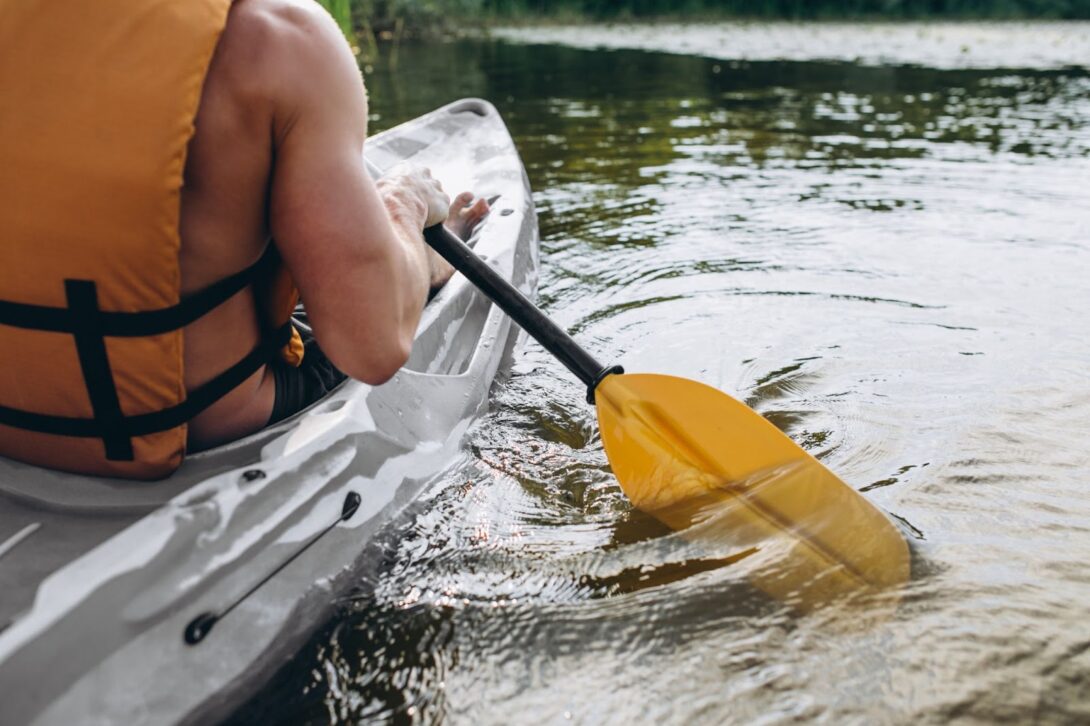
For operators of canoes and kayaks, the regulatory ambit necessitates the possession of a conspicuously radiant white lantern, possessing the capability to emanate a luminous radiance that remains perceptible from every conceivable angle. The luminous display is crucially mandated to be activated in ample time to preempt potential collisions, thereby enhancing overall maritime safety.
Furthering the compass of illumination requisites, it is incumbent upon all vessels, encompassing non-motorized craft, to exhibit an unambiguous white light capable of visibility from any vantage point. This edict assumes particular relevance when these watercraft find anchorage outside of designated mooring areas, amplifying the visibility and reducing the risk of inadvertent collisions.
The maritime authorities of North Carolina, cognizant of the nuanced challenges posed by nocturnal navigation, extend an encouraging endorsement for operators of kayaks and canoes to augment their safety measures. This includes the proposition of employing bow-mounted red and green lights, designed to facilitate enhanced situational awareness and contribute to a comprehensive lighting arrangement during nighttime navigation.
North Carolina Canoe / Kayak Fire Extinguisher Law
Turning attention to the imperative of fire safety, the regulatory framework governing canoes and kayaks within North Carolina exhibits a pragmatic and contextually apt approach. In recognition of the intrinsic characteristics of these waterborne vessels, the mandate for onboard fire extinguishers is sensibly exempted.
Indeed, the compact and relatively open design of canoes and kayaks inherently limits the potential for significant fire-related hazards. In the rare eventuality of a fire outbreak, recourse to elemental measures, such as employing a splash of water or even orchestrating a controlled capsizing, is often sufficient to effectively counteract the flames.
This judicious regulatory stance strikes a harmonious balance between pragmatic safety considerations and the specific operational nuances of canoes and kayaks, affording operators a rational and practical framework for fire safety without burdening them with unnecessary requirements.
Conclusion
In conclusion, the canoeing and kayaking laws in North Carolina play a vital role in ensuring the safety and enjoyment of water enthusiasts while preserving the natural beauty of the state’s waterways. These regulations are carefully crafted to balance the rights of paddlers with the need for environmental conservation and public safety. As we have explored in this article, understanding and adhering to these laws is essential for anyone venturing out onto the waters of North Carolina.
